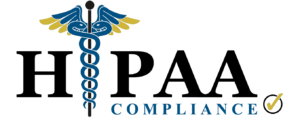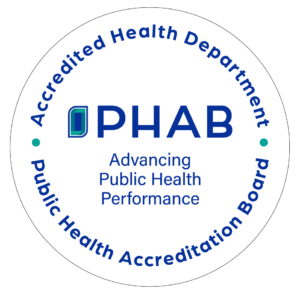Hurricanes. Tornados. Winter Storms. Flash Flooding. Fires. Pandemic Flu…………. These are all potential threats to our way of life.
Are you ready for the next disaster?
Despite the growing threat of a natural or man-made disaster, only a small percentage of Americans have emergency plans in place. For some of the nation’s most vulnerable populations and support organizations such as mothers with young children, local food banks, hourly wage workers, schools serving kindergarden through 12th grade, and individuals with chronic health conditions, being prepared is an even bigger challenge.
Please use the following information to help you, your family, your workplace and the community you live in, be more prepared for a public health emergency.
How prepared are you? Take this quiz to find out!
What Can You Do to Prepare?
1. Gather a Family Disaster Supply Kit
Each family should have a Family Disaster Supply Kit which should include at least the following items:
Food, Water, and Non-Perishable Items
-Ready to eat canned meats, fish, fruit, vegetables, beans and soups
-Water: one gallon, per person, per day
-Protein or fruit bars
-Canned or jarred baby food
-Dry cereal or granola
-Dried fruit
-Peanut butter or nuts
-Vitamins
-Crackers
-Canned juices
-Bottled water
-Pet food
-Sugar, salt, pepper
-Food for those on special diets
-Other nonperishable foods
-Comfort/stress foods & cookies, hard candy, lollipops, instant coffee, tea bags
-Baby food & formula, dry food
Medical, Health and Emergency Supplies
-Prescribed medical supplies such as glucose and blood pressure monitoring equipment
-Soap and water, or alcohol-based hand wash (60-95%)
-Tissues, toilet paper, disposable diapers
-Over-the-counter medicines, like aspirin
-Thermometer
-Diapers and bottles
-Flashlight
-Batteries
-Portable radio
-Manual can opener
-Garbage bags
-Latex gloves
-Sunscreen
-Sterile adhesive bandages
-Gauze pads
-Hypoallergenic adhesive tape
-Anti-diarrhea medication
Source: American Red Cross
Other Things to Consider:
-Do you have entertainment – board games or books?
-Where are your important family documents?
(Will, insurance policies, deeds, stocks and bonds, Passports, Social Security cards, immunization records)
-Bank account and credit card numbers.
-Inventory of valuable household goods – Insurance companies will need this!
-Family records – birth, marriage, and death certificates.
-Phone numbers of family members, your job, neighbors, and friends.
-If your area is prone to flooding in times of heavy rain, do you know what your designated evacuation route is?
-What if there was a fire in your house? Do you have an escape plan and have you tested it?
-How would your family stay in contact if separated by a disaster?
-Do you have an agreed upon location a safe distance from your home in case of fire? What about a place outside your neighborhood in case you cannot return home?
-Do you have an out-of-state friend or family member that everyone knows to check in with?
What if you passed out and were home with a young child?
-Do you have emergency numbers by every phone? Have you taught your child how to use the phone to get help?
-Do you know CPR and first aid? If not, contact your American Red Cross chapter for information and training. The number is 410-877-7609 in Bel Air or 410-278-2087 in Aberdeen.
A disaster occurring is a scary notion, but with proper preparation it is much less frightening.
So how do I get this together? It seems like so much!
Preparing Your Kit Within 7 Weeks!
“Caring About Preparing — 7 Weeks to a 72-Hour Kit“ is a program designed by Baltimore County to provide citizens of all counties with a manageable plan for building a complete home emergency preparedness kit.
“Caring About Preparing” gives you specific items to purchase each week for a seven-week period. At the end of that period, you will have a comprehensive kit to help you get through the first 72 hours following an emergency.
| Week 1 | Week 2 | Week 3 | Week 4 | Week 5 | Week 6 | Week 7 |
Source: Baltimore County Health Department Caring About Preparing program.
2. Develop a Family Emergency Plan
Your family may not be together when disaster strikes, so it is important to plan in advance: how you will contact one another; how you will get back together; and what you will do in different situations.
It may be easier to make a long-distance phone call than to call across town, so an out-of-town contact may be in a better position to communicate among separated family members.
Be sure every member of your family knows the phone number and has coins or a prepaid phone card to call the emergency contact.
You may have trouble getting through, or the telephone system may be down altogether, but be patient.
Find out what kinds of disasters, both natural and man-made, are most likely to occur in your area and how you will be notified. Methods of getting your attention vary from community to community. One common method is to broadcast via emergency radio and TV broadcasts. You might hear a special siren, or get a telephone call, or emergency workers may go door-to-door.
You may also want to inquire about emergency plans at places where your family spends time: work, daycare and school. If no plans exist, consider volunteering to help create one. Talk to your neighbors about how you can work together in the event of an emergency. You will be better prepared to safely reunite your family and loved ones during an emergency if you think ahead and communicate with others in advance.
3. Stay Informed
Some of the things you can do to prepare for the unexpected, such as making an emergency supply kit and developing a family communications plan, are the same for both a natural or man-made emergency.
However, there are important differences among potential emergencies that will impact the decisions you make and the actions you take. Learn more about the potential emergencies that could happen where you live and the appropriate way to respond to them.
In addition, learn about the emergency plans that have been established in your area by your state and local government.
Emergency preparedness is no longer the sole concern of earthquake prone Californians and those who live in the part of the country known as “Tornado Alley.” For Americans, preparedness must now account for man-made disasters as well as natural ones. Knowing what to do during an emergency is an important part of being prepared and may make all the difference when seconds count..


